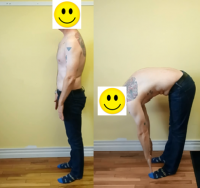Sean Gibbon’s Blog
I decided to start this blog after recent course feedback. On the course we discussed some of the issues in the physiotherapy profession, the complexity of pain, research gaps, ideas, clinical reasoning, clinical top tips and case studies. So this blog was born to share this. It is my opinion that chronic pain is not simple and that most people will do better with an individualized approach rather than simple strengthening. I look forward to sharing some case studies to highlight the use of Motor Behavior Therapy, and the newer testing and rehab strategies not everyone is familiar with (e.g., primitive reflex inhibition, postural reflex facilitation & cranial nerve treatment). My research ideas have largely come from problem solving with clients and continue to evolve. I’m sure it will evolve to include other musings!
The model has advanced quite a bit over the years into “Motor Behavior Therapy” (MBT). This is a clinical reasoning framework for the personalized management of musculoskeletal pain. The key themes are:
- Mechanisms
- Causation
- Individualization
- Barriers
Making Sense of Complexity
A Rehab Direction for All Patients
Motor Behavior Therapy is allows the therapist to assess the dominant mechanisms contributing to an individuals’ presentation and use clinical reasoning to prioritize starting points and problem solving. The MBT framework has identified key barriers for progression which can be used for stratification or sub-classification.
Motor Behavior Therapy allows the therapist to integrate their current knowledge and apply it within this framework, while adding new core skills to improve patient treatment.
Latest Posts
Is one screening tool enough to identify the diverse spectrum of behavioral factors that may influence a poor outcome in musculoskeletal pain?
Reference as: Gibbons SGT (2019) Is one screening tool enough to identify the diverse spectrum of behavioral factors that may influence a poor outcome in musculoskeletal pain? Proceedings of: The 10th [...]
“Overly Complicated Treatments” Are Not Overly Complicated When Sub-classified for Neurocognitive and Sensory Motor Function
I keep hearing on social media about "overly complicated treatments". I also keep hearing most of the same people promoting "simple" interventions and "keeping it simple". I would like to make [...]
Fluoroscopy of the pelvis during cervical rotation: Postive ATNR primitive reflex
This is a fluoroscopy of a subject from the study back in 2008. The subject is turning their head to the left and there iliac crest raises slightly. The subject had [...]
Primitive Reflexes and Movement Patterns: Causation
Movement patterns are a well established subgroup in non-specific low back pain (NS-LBP) despite the criticisms on social media and a couple of rather poor publications. Movement patterns represent one possible [...]






